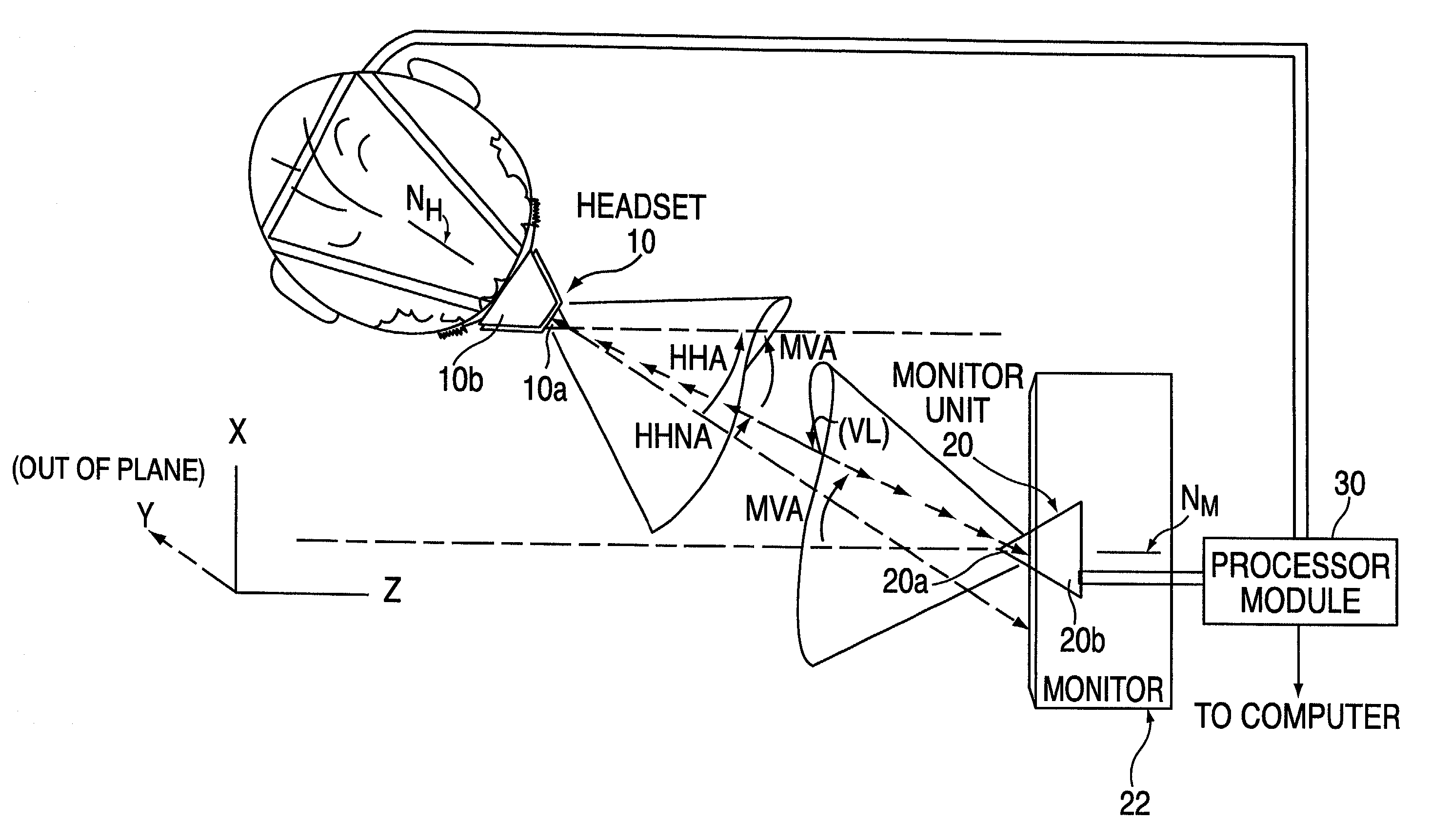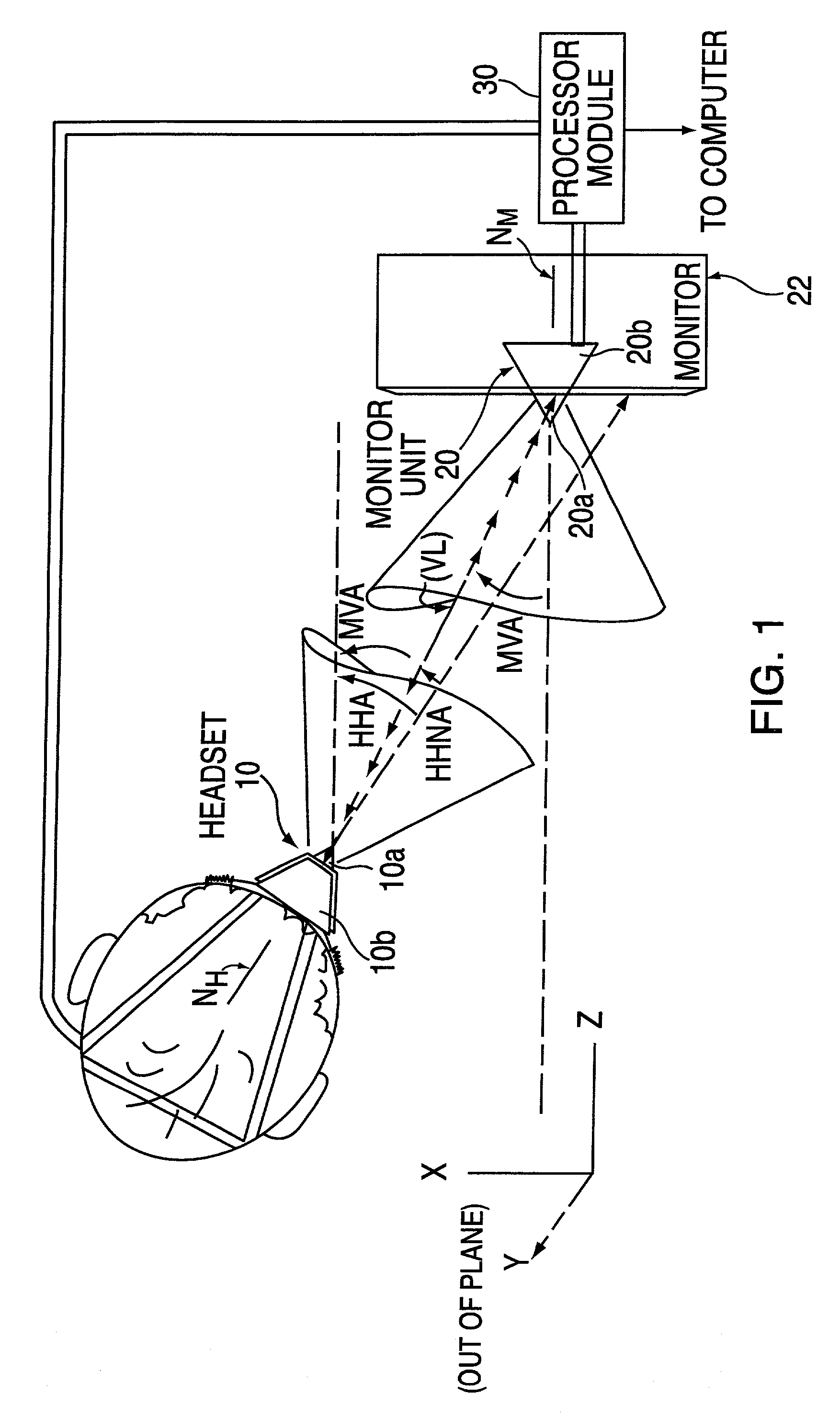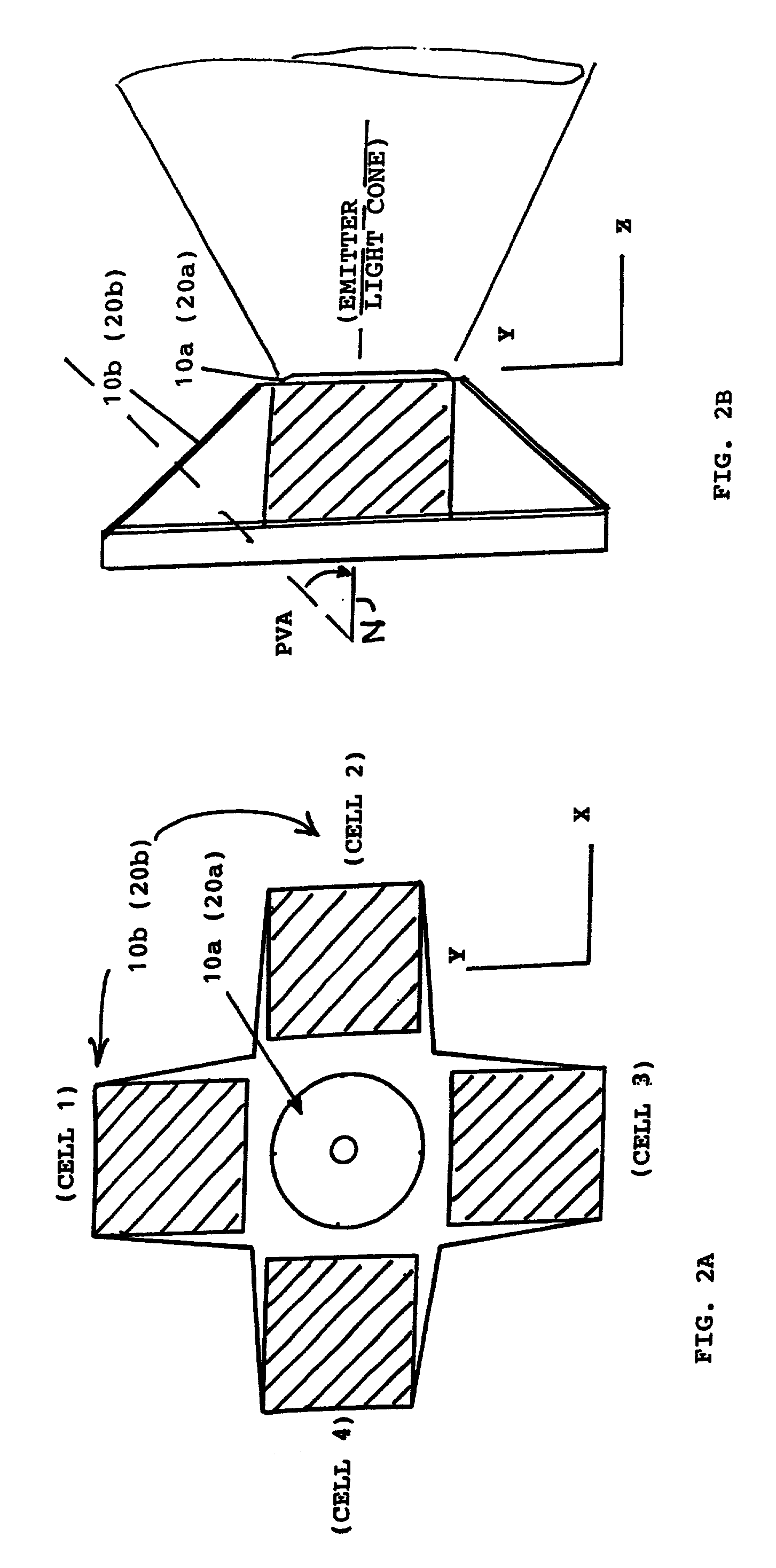3D cursor or joystick device
a joystick and cursor technology, applied in static indicating devices, instruments, teaching apparatuses, etc., can solve the problems of insufficient current peripheral input devices, cumbersome and burdensome users, no logical correlation between pressing a key or button, etc., and achieve the effect of low cost and simple manufacturing
- Summary
- Abstract
- Description
- Claims
- Application Information
AI Technical Summary
Benefits of technology
Problems solved by technology
Method used
Image
Examples
Embodiment Construction
[0022]A fundamental principle of the present invention is the use of complementary (two-way) position / angle detection to provide a sufficient set of determinative variables from which the coordinate position along linear axes and angular orientation along rotational axes of a movable unit can be determined relative to a stationary one. The movable unit is placed or worn a movable part of the user's body so that its movements can be used in a lifelike or natural manner for 3D navigation control of a cursor, instrument, character, etc., on a display of an associated computer running the corresponding 3D application program. In the following detailed description, a preferred embodiment of the invention is described in which identical infrared-emitter and photovoltaic-cell-array detector units are worn on the user's head and mounted on top of a display monitor. However, it is to be understood that many other variations may be used and still be encompassed within the guiding principles o...
PUM
 Login to View More
Login to View More Abstract
Description
Claims
Application Information
 Login to View More
Login to View More - R&D
- Intellectual Property
- Life Sciences
- Materials
- Tech Scout
- Unparalleled Data Quality
- Higher Quality Content
- 60% Fewer Hallucinations
Browse by: Latest US Patents, China's latest patents, Technical Efficacy Thesaurus, Application Domain, Technology Topic, Popular Technical Reports.
© 2025 PatSnap. All rights reserved.Legal|Privacy policy|Modern Slavery Act Transparency Statement|Sitemap|About US| Contact US: help@patsnap.com



